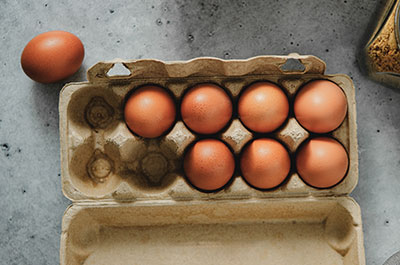Eating a healthy diet starts with following the U.S. Department of Agriculture’s MyPlate Plan. A key component is filling half your plate with fruits and vegetables. If you are choosing fresh fruits and vegetables, it’s important to store and wash your produce safely. These steps prevent foodborne illness, preserve your produce longer and stretch your food budget further.
Proper storage also reduces food waste, which occurs when spoiled produce or edible parts of produce are thrown away. That’s important because studies have shown that American households waste more than 30% of purchased food, including fruits and vegetables.
Below are answers to frequently asked questions about proper fruit and vegetable prep. These guidelines apply to all produce you use—whether from the grocery store, farmer’s market or garden.
Guidelines For Storing Fruits And Vegetables
There’s no need to wash your produce when you bring it home. In fact, washing produce immediately leads to creating an environment where bacteria can thrive and can shorten the shelf-life of your produce. Instead, store unwashed fruits and vegetables until you’re ready to eat them.
How and where you store your produce also makes a difference. Some fruits and veggies should be stored in the refrigerator, while others can be stored on the counter. In some cases, storing certain types of produce together accelerates the ripening process, which means they spoil sooner.
Fruits and vegetables that should be refrigerated
Set your refrigerator at 40°F or cooler and remove any stickers and ties from fruits and vegetables. Place produce in porous containers or bags to allow airflow and store in the refrigerator drawer, which has lower humidity and prevents spoilage. Be sure not to overcrowd the drawer. Fruits and vegetables that can go in the fridge include:
- Apples
- Berries and cherries
- Carrots
- Celery
- Corn
- Cruciferous vegetables (broccoli, cauliflower)
- Grapes
- Lettuce and greens
- Mushrooms
- Peppers, eggplant and zucchini
Once you’ve cut your produce, even if it was first stored on the counter or in the pantry, place it in the fridge. To prevent spoilage, store cut fruit and vegetables in an airtight container labeled with the date. Plan to use these items within 2 to 3 days.
Fruits and vegetables that can be stored on the counter
Certain fruits give off a ripening agent called ethylene gas that can cause surrounding produce to rot:
- Apricots
- Avocados
- Bananas
- Citrus fruits and pineapple
- Melons and kiwis
- Pears
- Plums
- Tomatoes
Store these fruits on the counter in separate bowls or containers that allow airflow to slow ripening. Once ripened, refrigerate the fruit and use it within 2 to 3 days.
Like the fruits above, onions emit ethylene gas. But they can last for up to 3 months when stored in a container like a wire basket on the counter.
Store potatoes in the pantry
Place potatoes in a cool, dark place like a pantry in a container that allows airflow. When stored properly, potatoes can last up to 5 weeks.
How Do You Wash Fruits And Vegetables?
The surfaces of fruits and vegetables can contain bacteria or residue from pesticides. Even organic produce can harbor germs. That’s why it’s important to wash all produce before eating it—even items with a peel or rind that you don’t eat. When you cut through a peel or rind, your knife carries any germs to the edible portion inside.
There are many products and homemade solutions to clean produce. Many contain vinegar, salt or baking soda, which can impact flavor. For best results, use lukewarm water to clean your fruits and vegetables and follow these steps:
- Remove all packaging, including stickers and ties, before washing.
- Place produce in a colander and run it under lukewarm water, using your hands to rub away any dirt.
- Soak vegetables like broccoli, cauliflower or leafy greens for 5 to 10 minutes in a bowl of cold water to remove dirt caught in crevices.
- Drain fruit and vegetables using a colander, sieve or salad spinner.
- Dry all produce with a clean kitchen or paper towel.
- Thoroughly wash your hands, sink and counters to remove germs or bacteria left behind in your kitchen.
There’s no need to wash lettuce or other produce labeled “pre-washed” or “triple-washed.” These items are safe to consume directly from their package.
Make Your Fruits And Vegetables Go Further
Adopting good storage habits helps ensure you enjoy all your produce before it spoils. Make a weekly meal plan and shopping list, setting realistic goals for what produce your family will eat.
Use fresh fruits and vegetables early in the week to avoid spoilage. Supplement meals with frozen or canned fruits and vegetables later in the week. If you’re concerned that produce may spoil before you use it, freeze it for future meals.
Also think about “upcycling food”—repurposing edible food that is often discarded. For example, reuse citrus peels to make a simple sugary syrup to flavor drinks or desserts. Flavor soups and sauces with fresh herb stems, carrot tops or celery roots. Start a compost bin and turn fruit and vegetable scraps into fertilizer for your garden.
Looking for more nutrition advice and want to make an appointment with a registered dietitian? Call 1-855-434-5483 or visit Nutrition Services on henryford.com.
Bethany Thayer, MS, RDN, is the director of the Henry Ford Center for Health Promotion and Disease Prevention. Learn more about Bethany.



